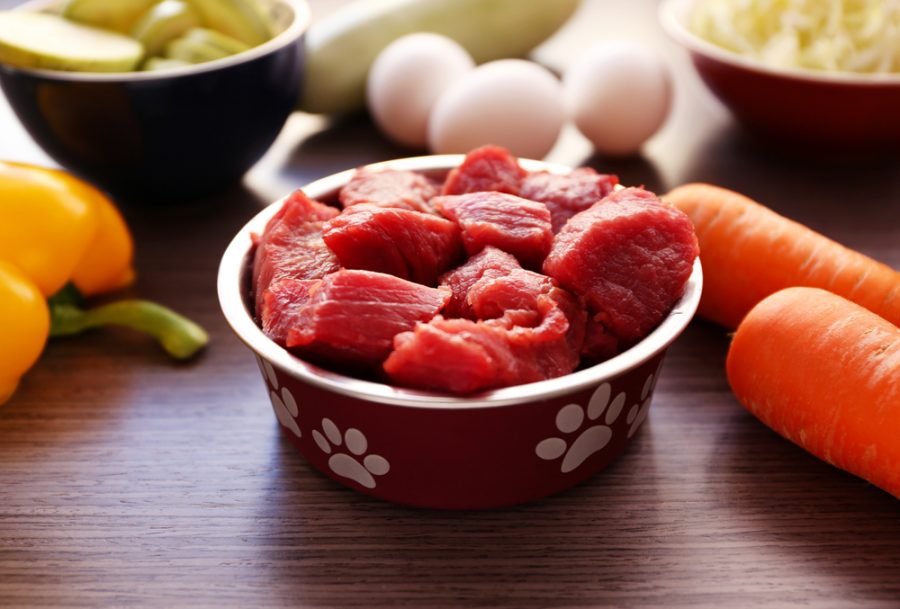A B.A.R.F. diet is a popular – and responsible – choice for your pet. But there are some factors you need to consider before going this route.
It’s a sound principle. Dogs and cats should be nourished with the food their bodies are designed by nature to thrive on. But species-appropriate nutrition cannot be found in the vast majority of commercially available pet foods – a fact many savvy folks are catching onto.
B.A.R.F. (Biologically Appropriate Raw Food, or Bones And Raw Food) diets are founded on the principle of natural nutrition. This diet usually consists of feeding ground meat with a calcium supplement or edible bones (i.e. chicken wings, backs and necks) that can be fed ground or whole, organ meats, eggs and fish, pureed veggies and a small amount of fruit (to mimic intestinal contents of prey) as well as supplements necessary to balance the diet.
B.A.R.F. for balance
In the wild, dogs and cats consume small prey whole (such as moles, voles and mice), but eat selectively from larger prey, sometimes leaving the stomach and entrails behind. For this reason, I recommend a B.A.R.F. diet over the prey model. When canines and felines consume intestinal contents, they receive a rich dose of their prey’s diet passed up the food chain, including finely chewed grasses and berries. I believe feeding foods that mimic a prey’s intestinal contents provides sources of phytonutrients, antioxidants, enzymes and vitamins not found in muscle meats, and are very beneficial to our companions’ overall health.
Start by adding certain carefully-selected foods and supplements that provide optimal balanced nutrition. Instead of feeding your carnivorous companion entrails (guts) found in whole prey, give him a “gut replacement” of pureed veggies and probiotics. Guts can contain parasites that negatively affect your dog or cat’s health. A veggie replacement is guaranteed parasite free.
However you decide to feed your companion, it’s always important to do some homework first. A B.A.R.F. diet is a fundamentally excellent choice, but it’s wise to educate yourself about the potential drawbacks as well as the benefits, so you can ensure your best friend will enjoy optimal nourishment.








